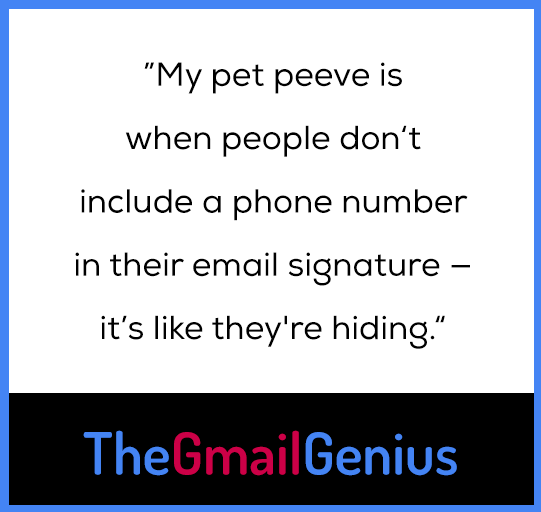How I Email: Phil Gerbyshak, Sales Trainer & Keynote Speaker
Email is a non-negotiable part of everyday life. For some, it’s an unruly time suck, but enlightened email users have systems to ensure they’re not a slave to the inbox. We’re asking smart thinkers to give us a peek inside their inboxes, share tips, ideas, gripes, and everything in between.
For Phil Gerbyshak, email is a tool for building connections — not a point of stress. This Tampa-based sales expert understands that emails are merely the beginning of a conversation. In our interview, he shared his top tips for getting your emails opened and sparking meaningful connections.
 What’s your personal approach to email? How do you handle your inbox?
What’s your personal approach to email? How do you handle your inbox?
I have two email accounts: a personal email and a work email. I tend to get up between 5 a.m. and 6 a.m. in the morning and the first thing I do is check them on my phone. I look for emails that require my immediate attention.
I try to add labels to things, but I don’t really sort. I try to keep up with all my messages. If I look at my work email now — I have 126 messages — all of which are read. In my personal email, I have 1,301 emails. If my work email gets cluttered like that, I tend to feel overwhelmed. I don’t believe in Inbox Zero. Instead, if I can keep my inbox below 100 messages by the end of the week, I’ve done a good job.
You’ve written about some of the email tools you use like FollowUpThen. Which other tools do you find helpful?
I love SaneBox. It’s my favorite tool to keep the junk mail and newsletters out of my inbox. I actually only use that in my personal email and it really keeps everything under control. If I look at all my emails — before Sanebox has filtered them — I have 271,511 messages in there. It’s filtered those down to 1,301 that it deemed important. But once a day, I will do a quick scan and see if there’s anything in there that I need to move to my primary inbox.
I also use Google Tasks. So for instance, I know that I need to update my podcast spreadsheet so I’ve created a task for that. And then when I have time, I’ll actually calendar it. So my process typically goes from email to task list to calendar.
What are some common mistakes people make with sales outreach emails?
I think people try to do too much with email. They’ll try to ask every possible question in one message and it ends up being a 30-paragraph email.
You really need to first figure out where you are in the sales cycle. Where’s the buyer? Where’s the prospect and what are they looking for? A first message should be soft and try to develop some rapport and establish that you have some value.
The problem arises when salespeople try to stuff that first email with everything. They’ll explain the product, the solution, a link to a case study, and try to set up a meeting.
PDF attachments are the death of most salespeople. They just throw on a PDF with no relevancy or context. By sending them your catalog or sales brochure, you’re saying that they don’t need the salesperson because they have all the information they need already.
 Instead, ask a question or make sure you have no open loops. Offer a suggestion and let them know that you’ll follow up in a specified period of time — and then actually follow up. The goal of the email is to inform the customer and persuade them that you have enough insight that you’re worth talking to on the phone.
Instead, ask a question or make sure you have no open loops. Offer a suggestion and let them know that you’ll follow up in a specified period of time — and then actually follow up. The goal of the email is to inform the customer and persuade them that you have enough insight that you’re worth talking to on the phone.
Writing a bad subject line is another mistake.
What’s an example of a bad subject line?
Not putting anything in the subject line is particularly bad as that gets the email trapped in spam. Sometimes they don’t ask questions or add any value in the subject line that would entice me to open it.
A subject line is really meant to be a call to read. The more action you ask for, the better. So writing “calling regarding our meeting at 10 on Tuesday” is a much better subject line than “about our meeting.” More specificity is better — a bad subject line is one that doesn’t really give any preview about what’s inside.
Also, a misleading subject line is bad. It’s really about having a match between the subject line and message so that you keep the promise you made in the subject line.
Let’s talk email pet peeves.
I don’t like messages that have too much information.
Another pet peeve is when people don’t include a phone number in their email signature — it’s like they’re hiding. Sometimes I’ll see an email and I don’t have time to write out a response, but I might want to pick up the phone and call that person. Don’t make it hard for me!
Any final tips?
Email is not something to hide behind. You should be using email as a tool, but if you’re using it wrong, people are going to hate you. So take the time to learn how to write more effective emails and you’ll get better responses.
Lastly, I’d say write how you speak, not how your English teacher taught you to write. I say this because when you finally get someone on the phone, they’re going to want to know that this is the same person who wrote the email, not the marketing department.